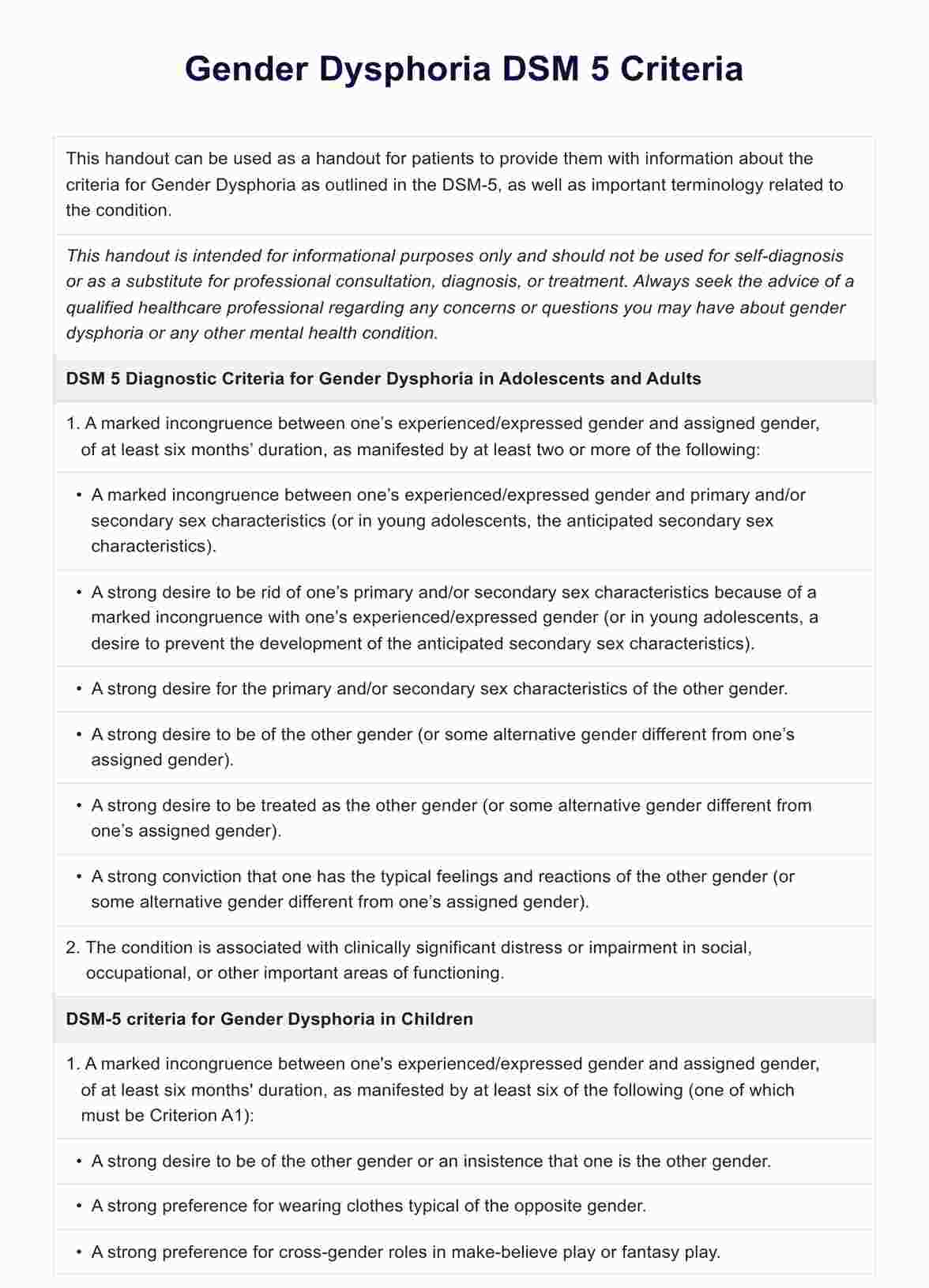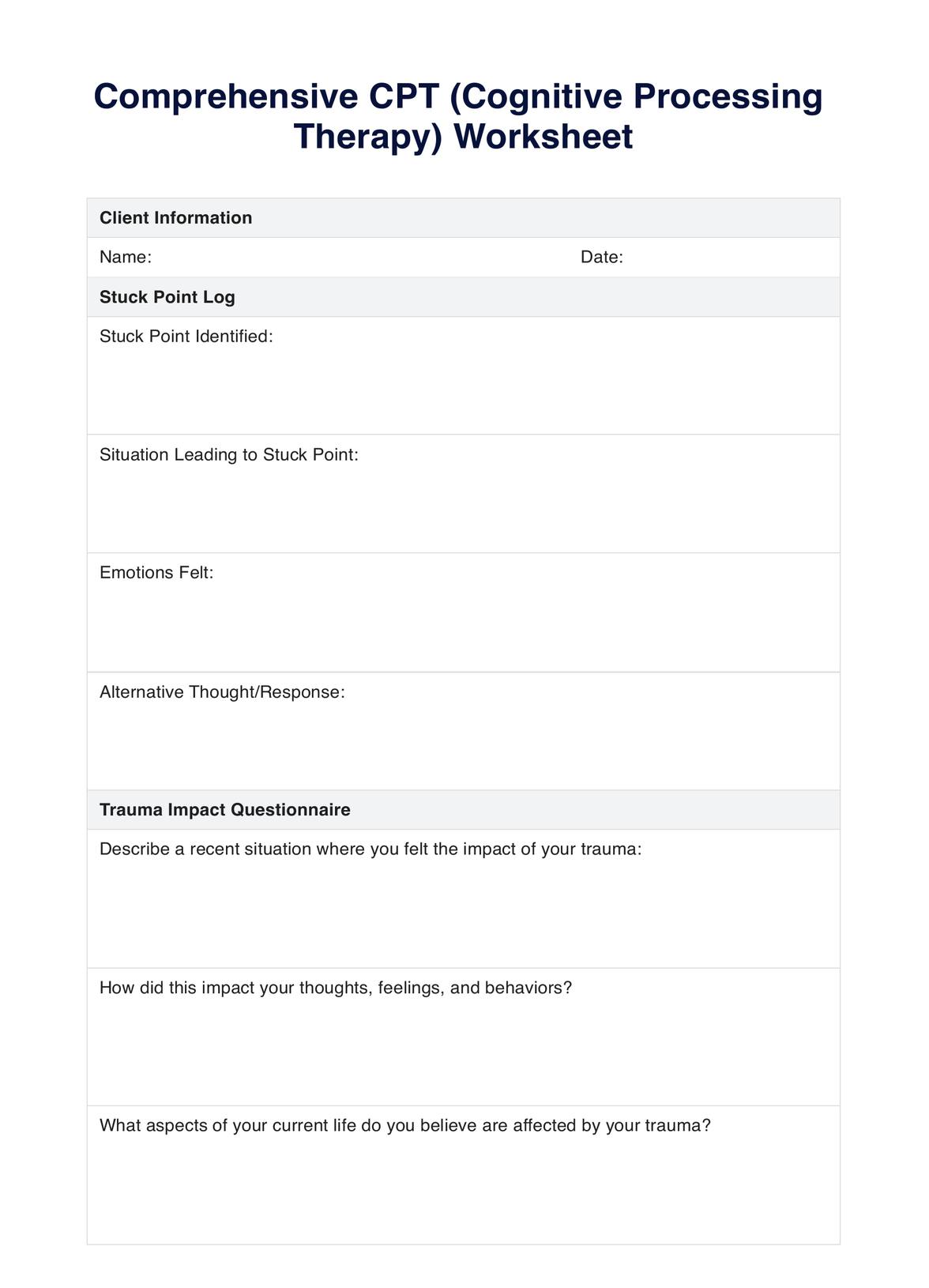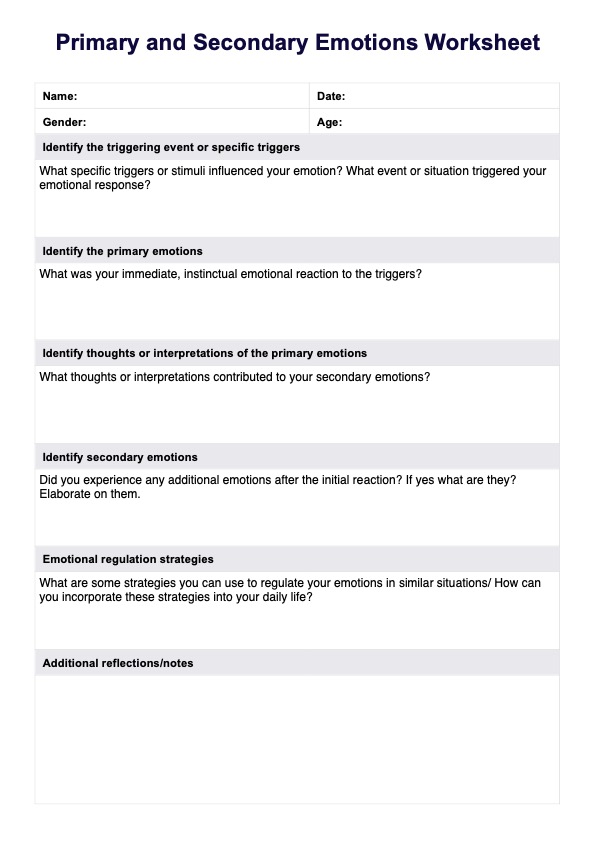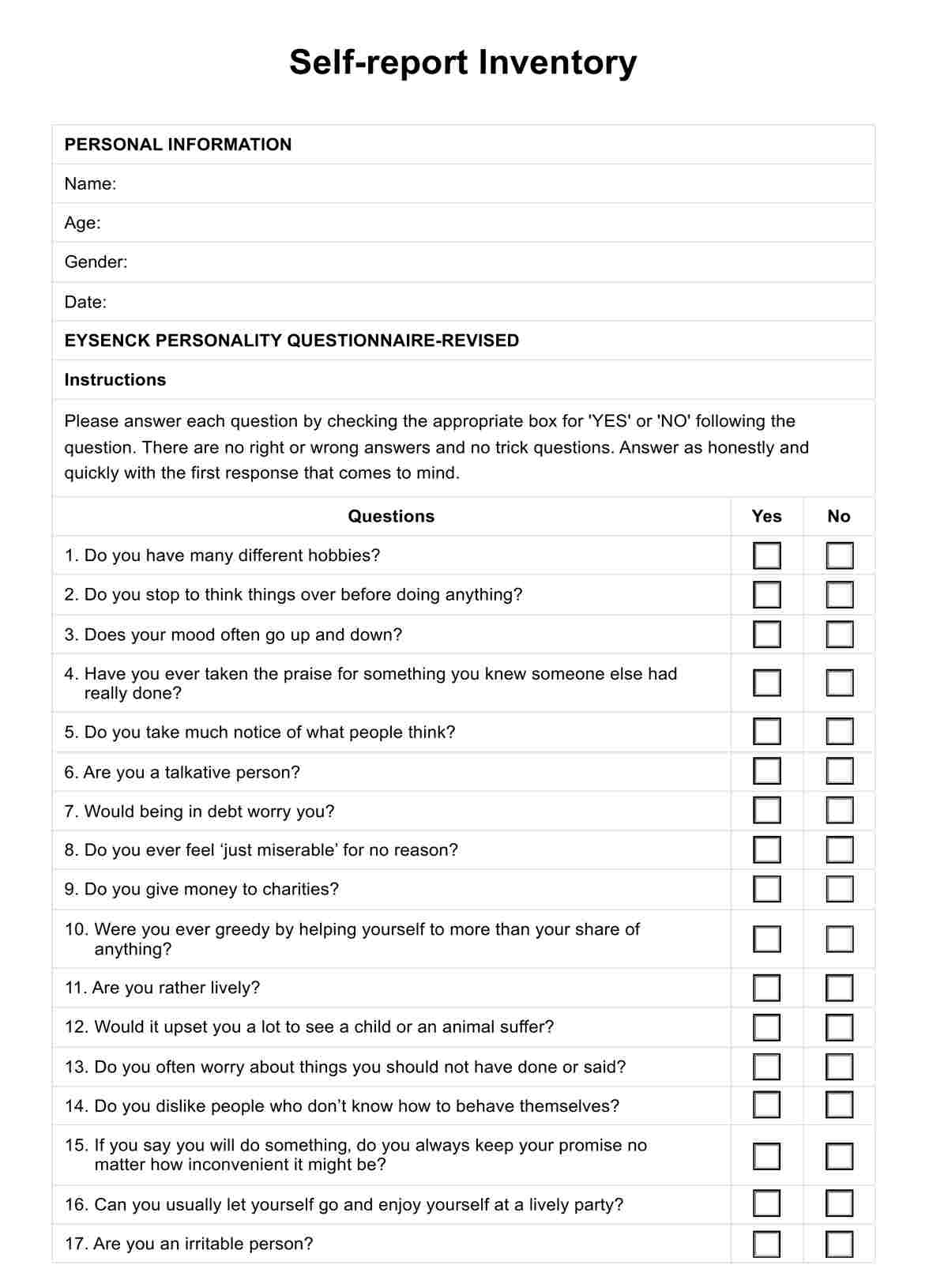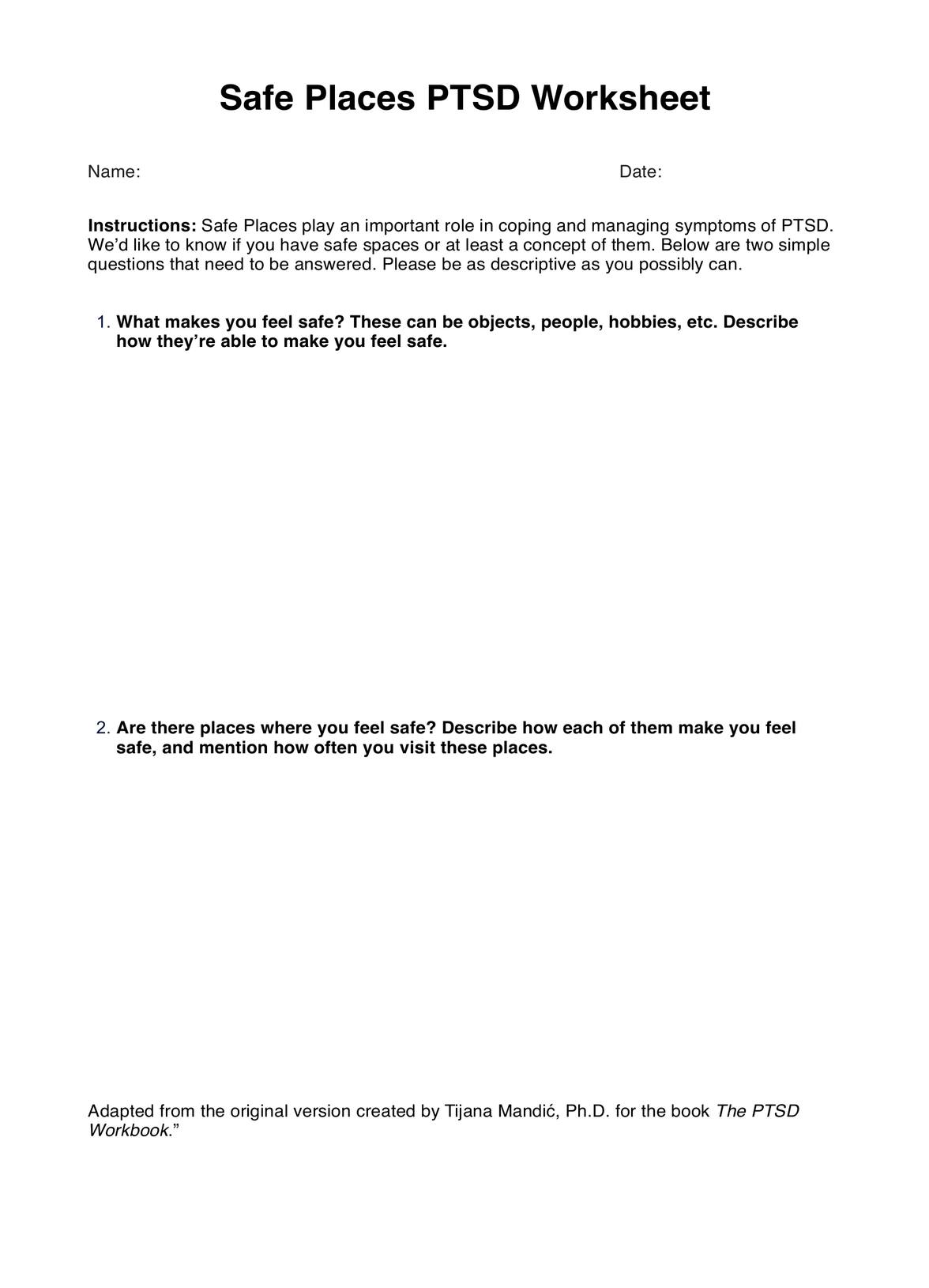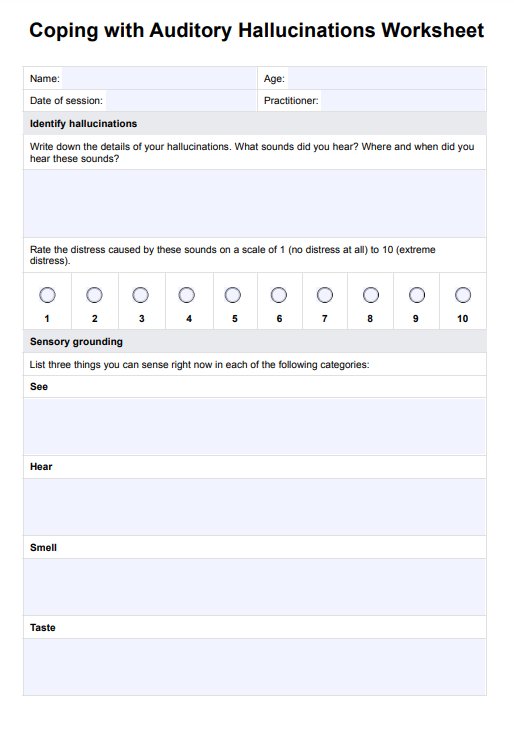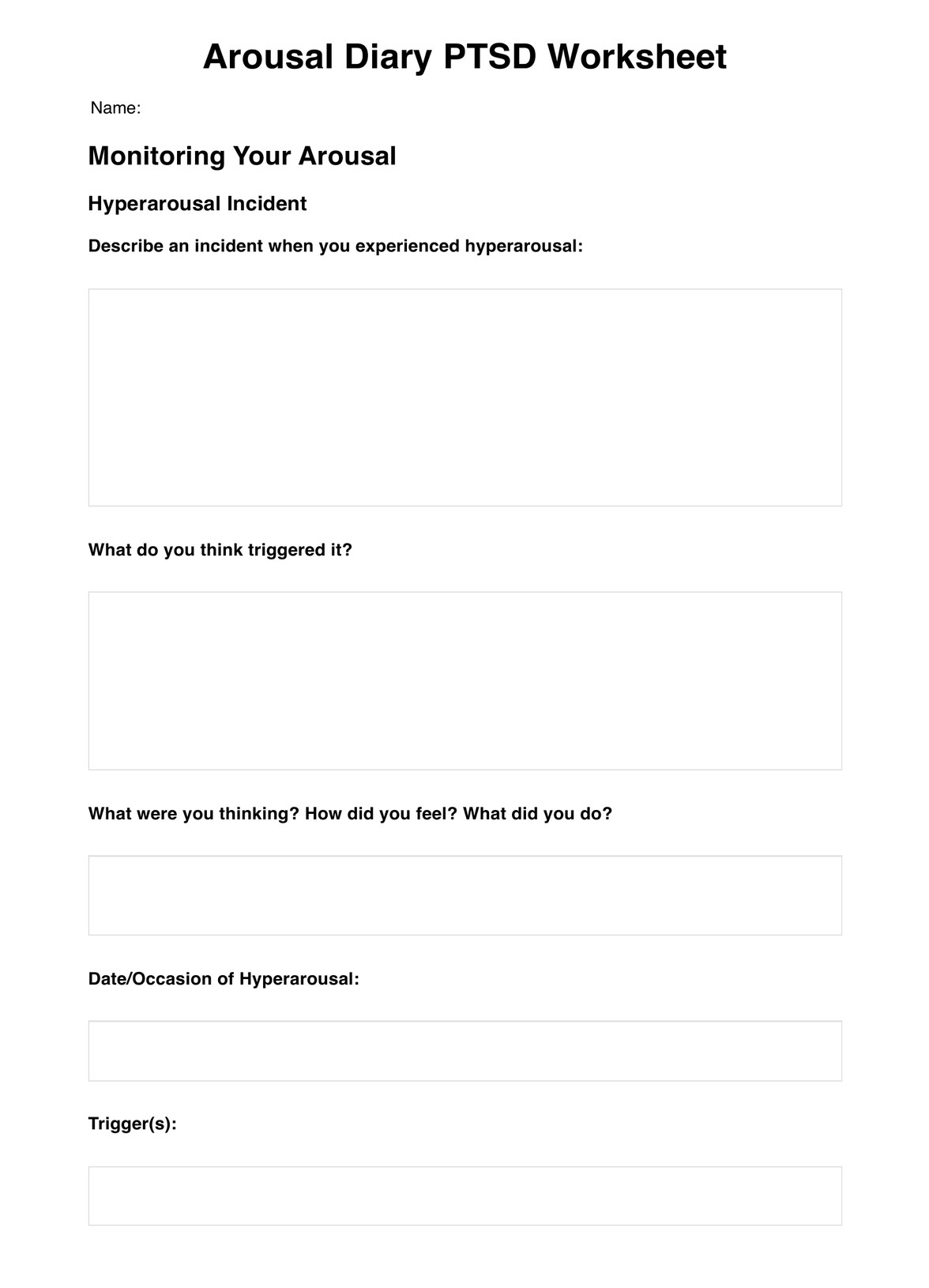Somatic Experiencing Exercises PDF
Learn how somatic experiencing works. Download a free Somatic Experiencing Exercises PDF handout for your practice today.


Somatic experiencing explained
Somatic experiencing (SE) is a trauma-informed, therapeutic approach that focuses on healing trauma by addressing the physical and emotional responses stored in the body. Developed by Dr. Peter A. Levine, SE aims to promote healing through body awareness and somatic exercises, which help individuals release excess energy produced by trauma and alleviate trauma-related symptoms such as anxiety, chronic pain, and post-traumatic stress disorder (PTSD) (McGreevy, 2022).
SE works by encouraging individuals to engage with their body's physical sensations and responses, using techniques like body scans, breathing exercises, and mindful movements. This helps individuals develop emotional regulation, increase body awareness, and release stored trauma. Somatic experiencing has been found effective in healing trauma, reducing emotional distress, and promoting relaxation, leading to overall emotional well-being.
Incorporating somatic therapy exercises, SE is rooted in understanding the mind-body connection. It uses somatic healing therapies to promote self-compassion, reduce stress, and support trauma recovery. SE is particularly beneficial for those dealing with post-traumatic stress disorder or traumatic memories. Through SE, individuals can heal both physically and emotionally, achieving significant reductions in PTSD symptoms and stress responses.
SE supports individuals in navigating their healing journey, facilitating deep healing through somatic practices and therapeutic approaches. It helps individuals better understand their body’s wisdom, release stored tension, and create a deeper connection between mind and body.
Somatic Experiencing Exercises PDF Template
Somatic Experiencing Exercises PDF Example
How to use our Somatic Experiencing Exercises PDF
The Somatic Experiencing Exercises PDF is a practical tool for various exercises. It provides Follow these steps to use the template effectively:
Step 1: Download the template
Access the Somatic Experiencing Exercises PDF template by clicking the "Use template" button, which opens the template on the Carepatron app's template editor. You can customize it, fill it out, or print it from there. You can also get a non-customizable digital PDF by clicking "Download."
Step 2: Prepare the client
Ensure the client is in a comfortable, quiet space, seated or lying down, ready to engage with the exercises. Use the instructions in the template to lead the client through various somatic experiencing exercises.
Step 3: Guide the client through the exercises
To conduct somatic experiencing exercises effectively, carefully follow the step-by-step instructions provided in the template. Start with a grounding exercise to help the client feel present and safe. Encourage the client to describe their sensations in a nonjudgmental way, emphasizing awareness and acceptance.
Step 4: Monitor client responses
Pay attention to the client's verbal and non-verbal cues throughout the session. If the client becomes overwhelmed or experiences distress, pause the exercise and guide them back to a grounding activity. Adjust the pace and intensity of the exercises as needed to ensure a positive experience.
Step 5: Document the session
After completing the exercises, use the note section in the template to document the client’s responses, observations, and any significant insights gained during the session. This will help track progress and identify patterns that may inform future sessions.
Step 6: Follow up with the client
At the end of the session, provide space for the client to share their thoughts and feelings about the exercises. Offer gentle encouragement and discuss any next steps or additional resources they can use to continue their somatic experiencing journey outside of sessions.
Benefits of somatic experiencing
Somatic experiencing is a transformative therapeutic approach that addresses the physiological and emotional impacts of trauma, promoting deep healing and recovery.
- Heal trauma at the root level: SE releases trauma stored in the nervous system by working directly with the body's physical responses and sensations. This enables individuals to heal from traumatic memories and effectively reduce trauma-related symptoms.
- Improve self-regulation: Somatic exercises and techniques empower individuals to manage their stress response and regulate emotional and physical reactions, fostering resilience and emotional well-being.
- Reduce anxiety and stress: Mindful movements, breathing exercises, and somatic practices in SE significantly reduce anxiety, stress, and emotional distress, promoting relaxation and calm.
- Enhance body awareness: Through body movement, SE enhances awareness of bodily sensations and their connection to emotional and psychological health. This helps identify and release tension stored in the body, supporting trauma recovery and increasing body awareness.
- Boost emotional regulation: By addressing the nervous system's role in emotional responses, SE helps individuals develop better emotional control, reduce PTSD symptoms, and enhance interpersonal relationships.
- Embrace a holistic healing approach: Somatic experiencing integrates the mind-body connection, addressing cognitive processes and physical sensations. This comprehensive approach promotes relaxation, emotional healing, and overall mental health improvement.
Reference
McGreevy, S., & Boland, P. (2022). Touch: An integrative review of a somatosensory approach to the treatment of adults with symptoms of post-traumatic stress disorder. European Journal of Integrative Medicine, 54, 102168. https://doi.org/10.1016/j.eujim.2022.102168
Commonly asked questions
Unlike cognitive behavioural therapy (CBT) or dialectical behavior therapy, somatic therapy helps to process trauma by focusing on interoceptive, proprioceptive, and kinesthetic bodily sensations. It releases stored tension and trauma, restoring balance and resilience through body awareness and nervous system work.
No, somatic experiencing (SE) is beneficial for anyone experiencing stress, anxiety, or trauma, including post traumatic stress disorder. It promotes emotional healing, stress management, and body awareness.
A somatic release, guided by a qualified somatic therapist, often feels like a wave of emotional or physical tension leaving the body. This release, experienced during trauma therapy, may manifest as deep sighs, trembling, warmth, or a sense of lightness and relief. Clients often describe it as a profound shift, where stored trauma energy is gently discharged, leading to a renewed sense of balance and calm. While the sensations vary for each person, a somatic release frequently brings increased body awareness and a greater connection to the present moment.


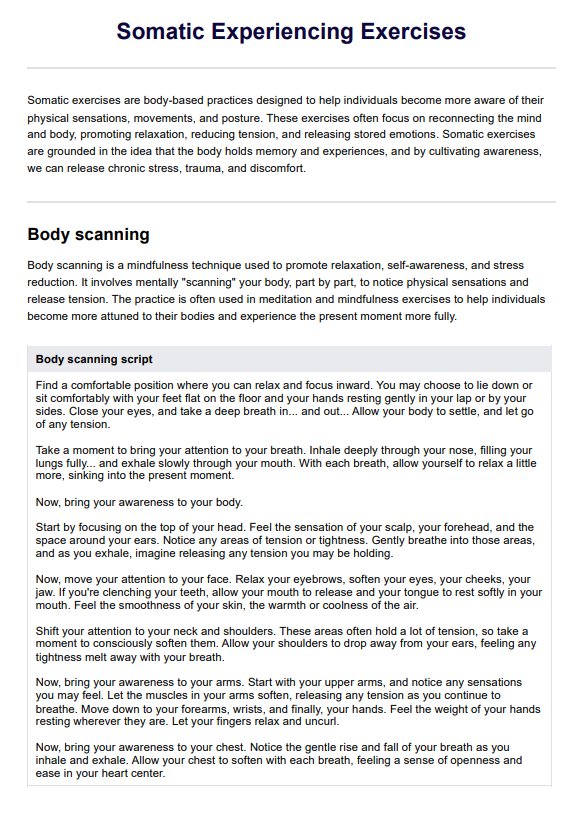
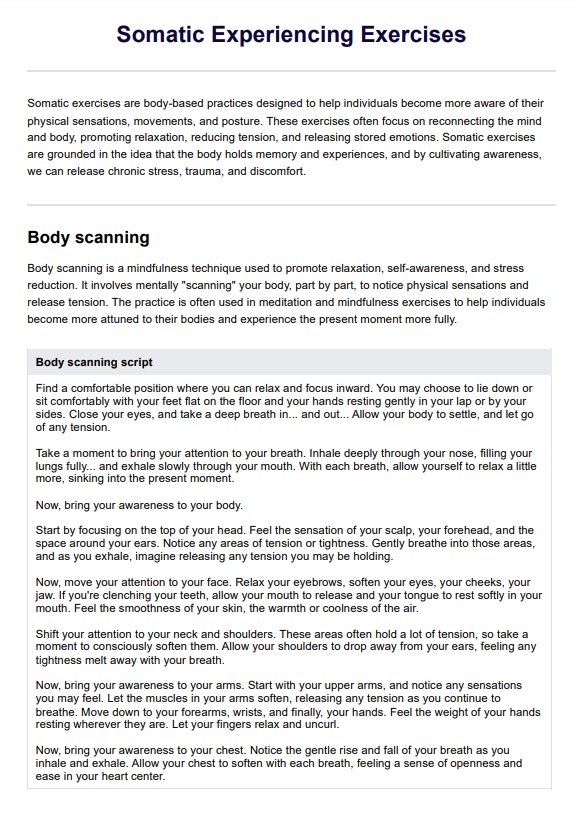
















-template.jpg)




















































































